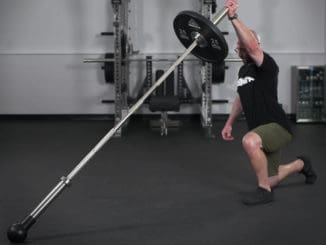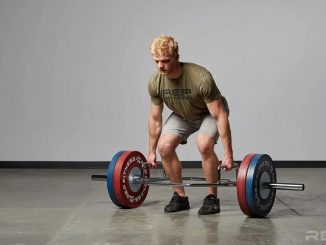In this article, we’re going to give you a tour of all the different kinds of barbells – and what each one is best for.
With the different kinds of barbells you see in a gym or in a sports facility, you might be confused about which to use. Each of them has purposes and benefits for overall well-being. They vary in size, shape, knurling, whip or stiffness, and sleeves, yet they are all instrumental in strengthening your whole body, increasing your range of motion, improving your athletic performance, and much more. A single barbell allows you to do different exercises and movements to target different areas of the body, provide unique grips, and employ different muscles.
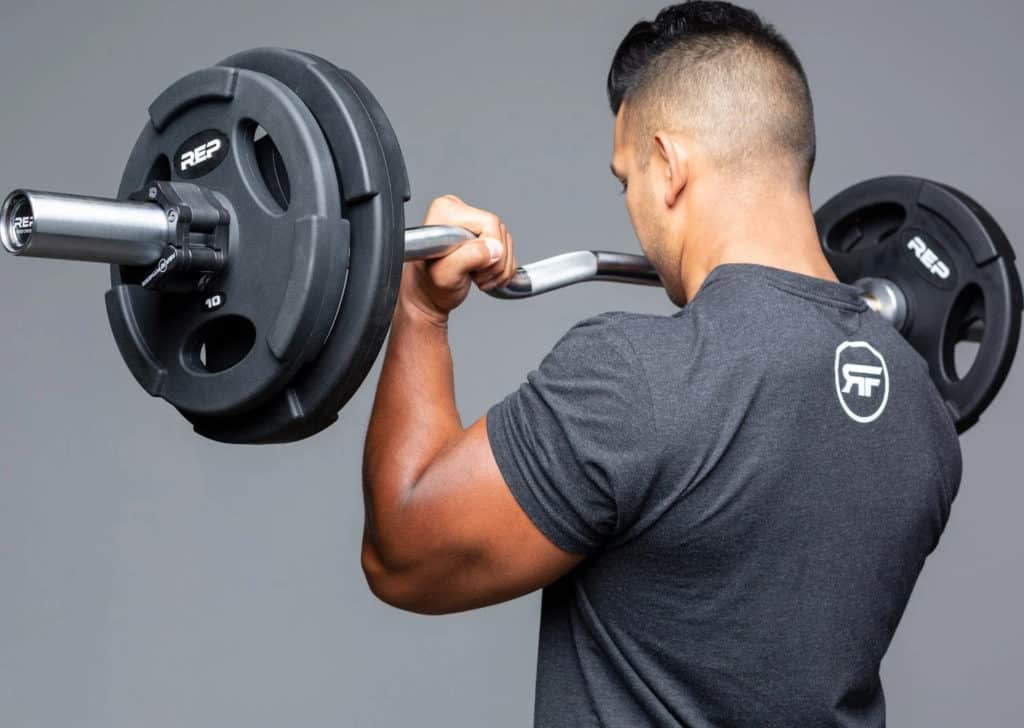
We have to start somewhere, so let’s start with what is probably the most important barbell for heavy strength training – the Olympic Barbell.
Olympic Barbell
An Olympic barbell is generally stronger, heavier, and has a broader diameter and sleeve than a standard 1″ diameter barbell (like the kind you might find at Walmart or your local sporting goods store). It holds a higher weight rating and can take up more weight than a standard bar. It weighs 25-50 lbs, and this extra weight comes from the higher quality steel, length, width, and bar sleeves. They vary in the weight they can hold, but some have a load capacity of 1000 lbs or more.
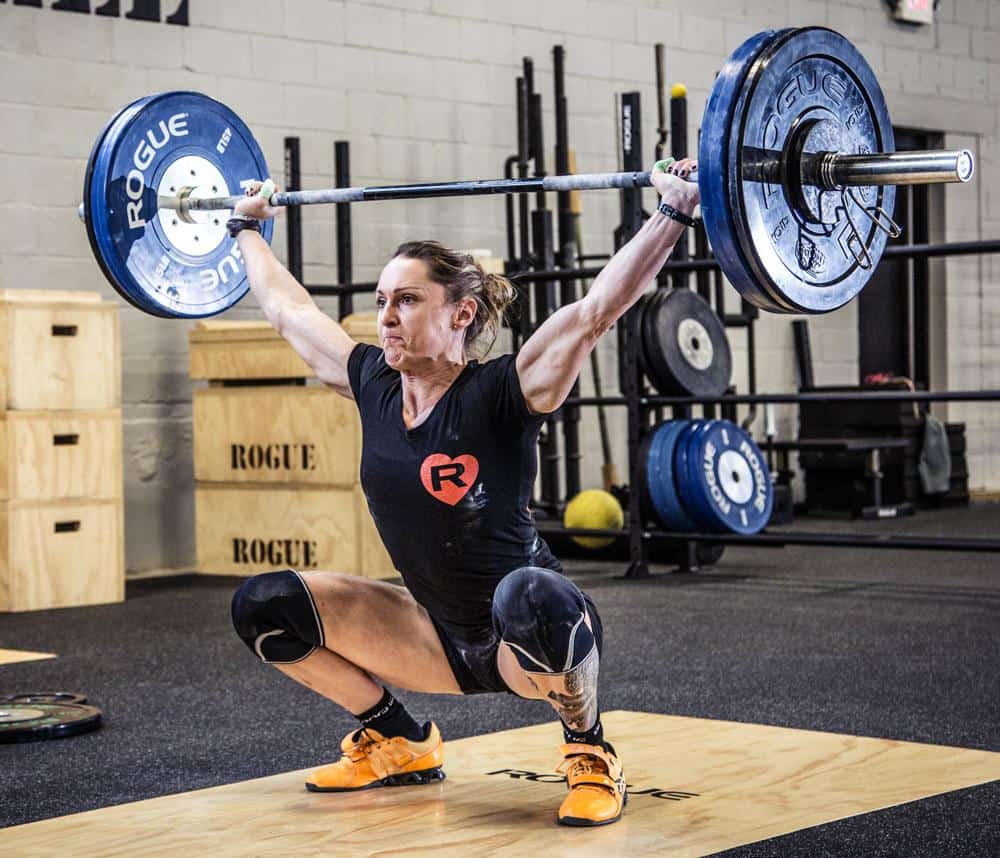
They are recognizable by their freely rotating ends (sleeves) that measure 2″. The sleeve rotation helps decrease the torque produced by the weight plates, which prevents the pressure on your wrists and shoulders. The main shaft of the Olympic bar varies from 28-30mm, and the end sleeves measure 50mm. An excellent quality Olympic bar has a consistent sleeve diameter with little to no variation, while a standard bar diameter differs depending on the brand because of the steel quality.
An Olympic bar uses better quality materials, thicker and longer steel, and has revolving sleeves that need further technology and materials (bearings or bushings on which the ends can revolve) to produce. With all the qualities the Olympic barbell has, it is not surprising that it comes at a higher cost than a standard barbell.
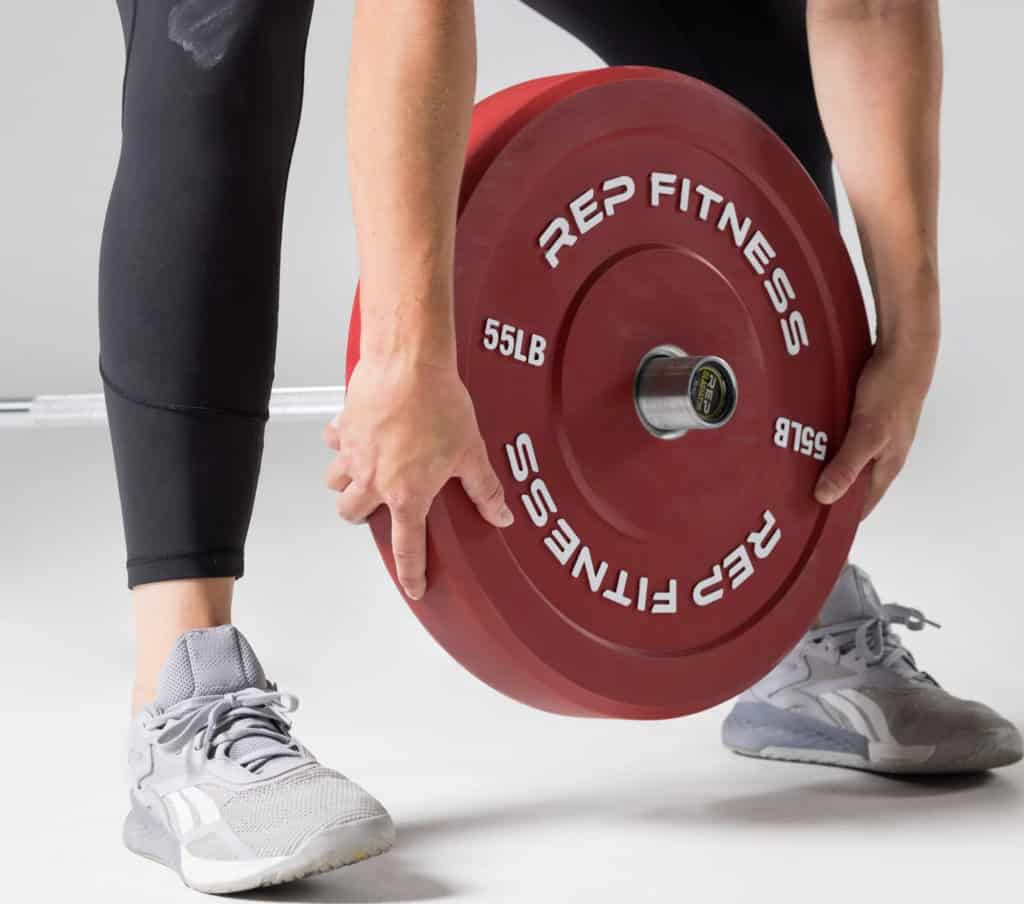
An Olympic barbell is often seen at the Olympics, where lifters compete in the snatch and clean & jerk events. Most gyms and fitness centers have Olympic barbells because they are more durable and can hold more weight than regular barbells.
But aside from these exercises, you can do more with the Olympic barbell like the following:
Deadlift
The deadlift is the most functional of all lifts – and consequently it is the most remarkable exercise you can do with an Olympic barbell. It stimulates and activates the back, legs, shoulders, glutes, and core muscles. It is a demanding movement that initiates growth and helps maintain balanced muscle development.
Squat
If you want to develop your quadriceps, glutes, calves, and hamstrings, the squat is the best exercise you can do while also developing core strength. You can do this exercise with the Olympic barbell on your back or across your chest (in which case it is known as a front squat as opposed to a back squat). The load of the weight will prioritize the growth of your front quadriceps and glutes.
Power Clean
The Power Clean is hard to describe, but it involves moving the loaded barbell from the floor to your shoulders in one swift, explosive movement. It is the first third of the clean & jerk and an exercise that will enhance your overall power and give you an athletic-looking body. It is an explosive compound movement that will help you improve muscular coordination and power output.
Sumo Deadlift
This is an effective lower-body exercise that builds big legs and a strong back. It helps improve posture, makes it easier on the spine, and activates many muscle groups. Some trainees find this position easier than the traditional deadlift – as your shins will be more upright and not in the way of the bar’s ascent.
Find out about the different parts of the Olympic Barbell.
Powerlifting Barbell
A powerlifting barbell is utilized for strength training. It is extra thick and has center knurling, aggressive knurling, bench press marks, and more affordable bush bearings. At 29mm, a powerlifting barbell is thicker than an Olympic barbell, making it more durable and solid. This also minimizes whip or flex in the bar when it is loaded heavily. This is considered desirable for bench pressing and squats.
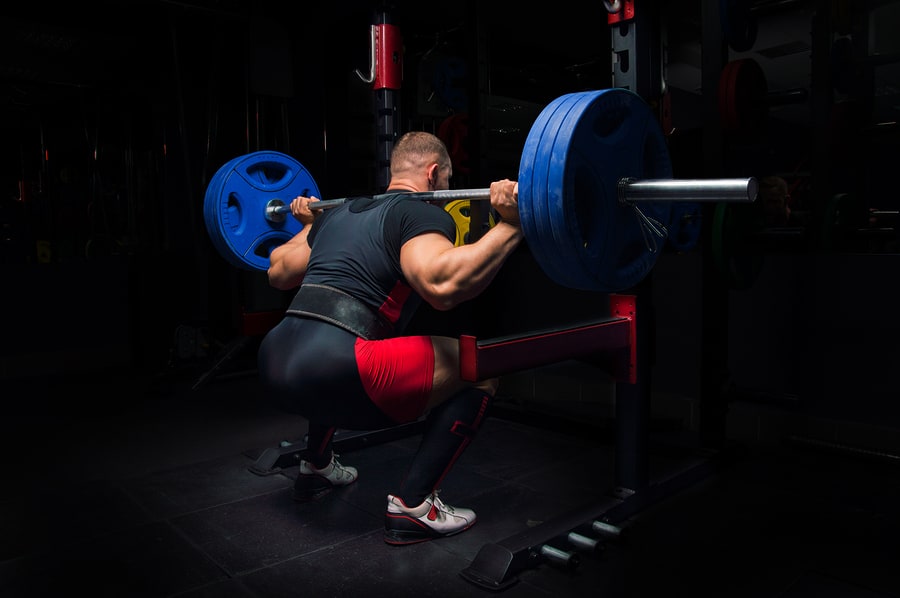
Its aggressive knurling prevents it from slipping out of your hands, and the center knurling stops it from scratching your shin when doing movements like deadlifts. But because it has a rough texture, some lifters oftentimes find it uncomfortable to use.
Truth be told, there are different kinds of powerlifting bars. There are bars intended for the bench press and squat, and the deadlift.
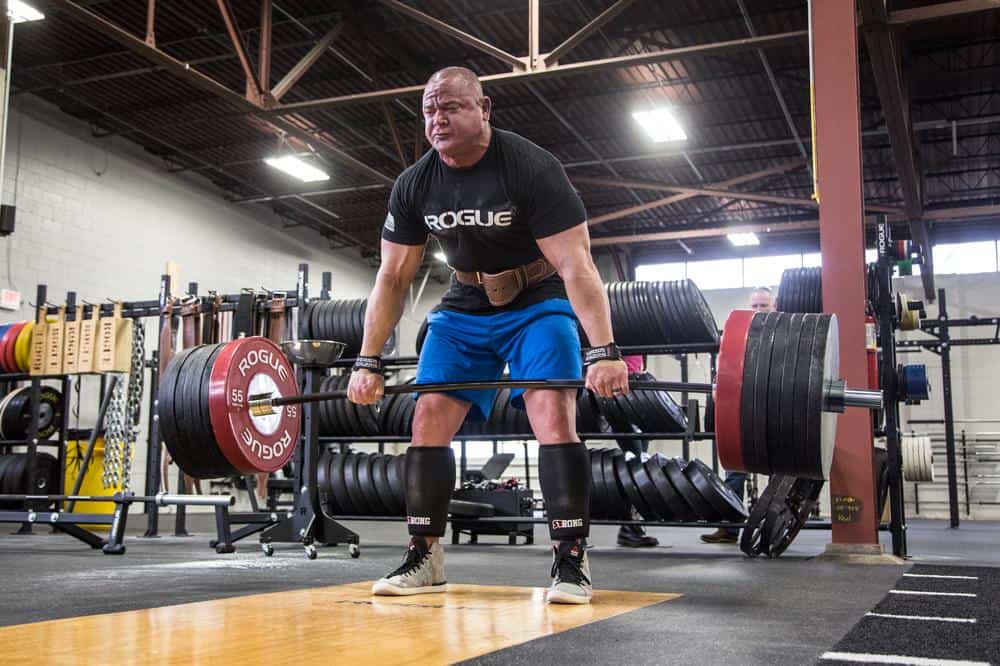
It is ideal for powerlifting and bodybuilding as it helps in strength and hypertrophy training. Unlike Olympic lifting, which is a test of explosive strength, power, and technique, powerlifting is a pure strength sport. Olympic lifting and powerlifting both get three attempts at each lift but powerlifting is more about lifting as much weight as possible.
A powerlifting barbell is more rigid than an Olympic barbell to better hold heavier weights. Its grip marks are used to check legal hand positions for the bench press, while marks on the Olympic bar are for reference points. Because it doesn’t need sleeves to spin freely, a powerlifting bar uses bushings instead of costly bearings—this makes it more affordable than the Olympic bar.
There’s three main lifts in a powerlifting competition – and hence they are known as the “the big three” – the bench press, squat, and deadlift. All these three exercises are essential for building muscle mass and density, improving strength and power, boosting performance, and supplying the needed fat-burning support. However, there are other more efficient and challenging powerlifting exercises that help you gain strength and reach your lifting goals.
Barbell Back Squat
This exercise effectively strengthens your legs and hips and adds mobility and balance to the whole body. It targets your quads, calves, glutes, hamstrings, hip flexors, and abs.
Barbell Bench Press
This workout is an essential classic powerlifting exercise that develops your strength and size and improves your endurance for daily activities. It helps keep your bones healthy, makes them stronger, and helps burn more calories. This exercise targets your triceps, chest, front delts, and abs.
Over Head Press or Military Press
It is one of the most valuable exercises to develop nearly all major muscle groups in your body, such as your shoulders, upper chest, triceps, core, glutes, and biceps. The military press is perfect for improving muscle mass, power-based lifts, and developing good posture.
Power Clean
This movement activates virtually every muscle, helping you develop speed, enhance power, and attain strength if done correctly. It is also exceedingly effective in burning calories and body fat and helping you achieve a slim physique.
Farmer’s Walk
The Farmer’s Walk is a simple exercise that helps you build outstanding grip strength and endurance. It delivers a total body workout that improves cardiovascular health and endurance and increases muscle strength and power.
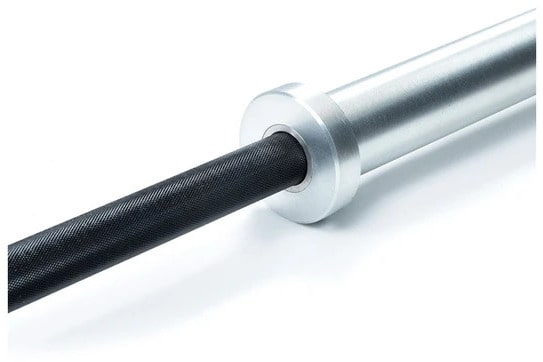
Training Bar
A training bar is a perfect beginning bar if you are just starting in the world of weights. Even if you are a regular lifter, the feeling of traditional chrome in your hands will always be pleasant. It is a tried, true classic, exceedingly versatile, and can be used for nearly any application. The training bar is created for recreational lifting Olympic weightlifting, and competition. It is a piece of equipment that can withstand daily heavy training.
For instance, the American Barbell Training Bar is solid and applicable for any training purposes, tried upon regular abuse of strenuous training, and proven to persist. It has a 190,000 PSI tensile strength and is tested with every shipment of raw material to guarantee consistent stability. Its bar sleeves are precision machined, all coated with hard chrome to protect against falling and collisions
The sleeves spin around high-strength composite bushings utilized in aircraft and automotive industries for steady rotation. The shaft and sleeves are polished in hard chrome for added strength and corrosion resistance, while the knurl pattern is crisp with just the right amount of bend.
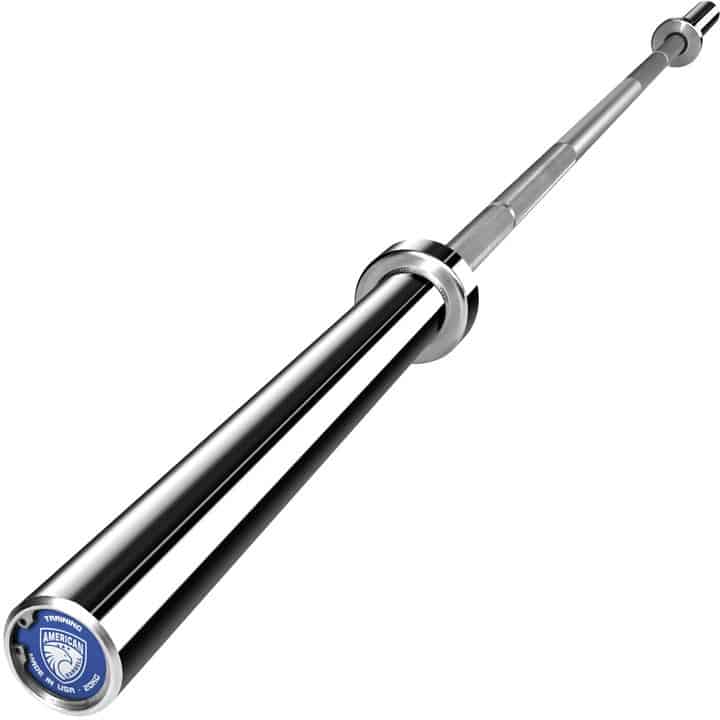
The 20 Kg Precision Training Bar is the perfect choice for those looking for a multi-purpose precision barbell that will last through ages. This bar is American Barbell’s top-notch performing multi-use barbell. The bar provides great whip and long-term performance.
The shaft is made from precision straightened stainless steel, and the sleeves turn flawlessly through the industry-changing composite bushing system. The performance training bar can handle any workout you throw at it because of its precision ground alloy steel with a hard chrome coating.
It has a constant 190,000 PSI tensile strength and went through strict quality control to provide premium whip and long-term performance. The bar sleeves are welded with accuracy to eliminate failure. The weld is removed so as not to interfere with plates resting flush against the sleeve collar.
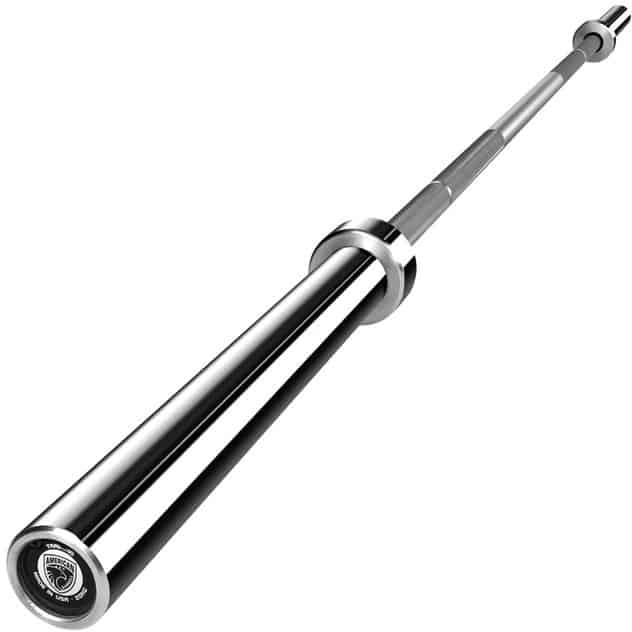
Trap Bar or Hex Bar
The trap bar or hex bar is one of the most versatile, practical, and easy-to-use bars you can have in your garage gym. It is a hexagonal-shaped barbell where you stand in the middle of the hexagon instead of behind the standard straight barbell. It allows for equal weight allocation around the body, making it safer and easier to do deadlifts, carries, shrugs, and other movements. The trap bar is more functional, allowing you to step in and out of the bar, and it doesn’t restrict the lower body’s range of motion. Using a standard barbell puts unnecessary pressure on your spine and other joints because the load is consistently in front of or behind your centerline.
This makes the trap bar safer and more comfortable for people with back issues and helps prevent those without back issues from developing them. Using the Olympic barbell is the most familiar way to do deadlifts and the approach used in deadlift competitions. However, using a hex bar is less stressful on the back and more comfortable altogether. There are three types of trap bars—the standard trap bar, open trap bar, and EZ load trap. The standard trap bar has one or two sets of handles referred to as low and high. It can be challenging to load and unload and take up plenty of room, though it is cheaper and easier to find.
The open trap bar eliminates the part of the bar that is behind you. It allows a built-in “floor jack” to load and unload easily. It offers multiple handle options and is usually rackable, which opens up many new exercise opportunities. The EZ load trap bar heightens the sleeves off the ground for more effortless loading and unloading of plates. Another typical feature of most EZ load trap bars is their multiple handle diameters.
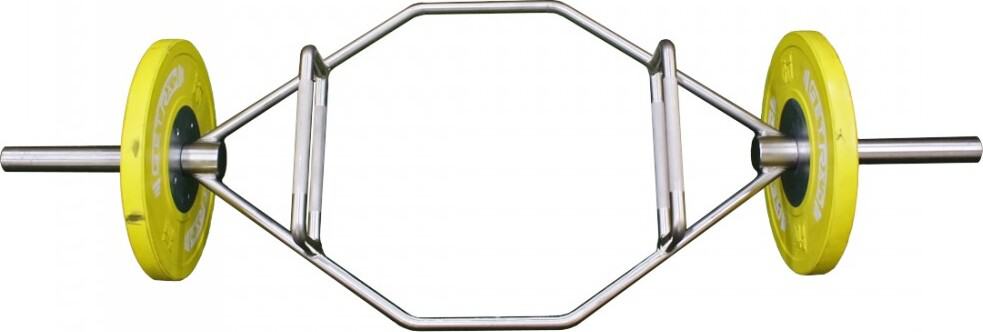
If you are struggling or having a hard time doing deadlifts in the traditional stance, the hex bar might be the best option. It will immediately put your body in a position to perform cleaner deadlift mechanics. There are plenty of other exercises that you can do with a trap bar, and some of the best ones are the following:
- Bent-Over Row
- Staggered-Stance Deadlift
- Deadlift
- Tall-Kneeling Shoulder Press
- Floor Press
- Elevated Split Squat
- Romanian Deadlift
- Single-Leg Deadlift
- Suitcase Carry
- Figure-8 Carry
- Push-Up
- Shrug
- Inverted Row
- Jump Squat
- Elevated Trap Bar Squat
- Rack Pull
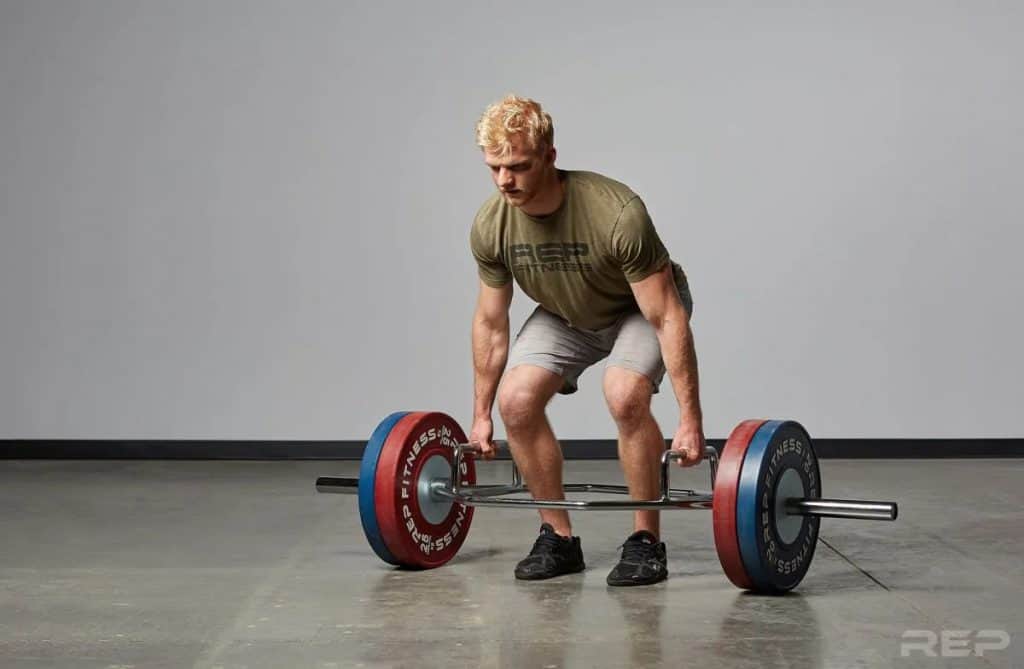
Safety Squat Bar
The safety squat bar is cambered, and the ends drop at a 90-degree angle bending downwards. A collar is attached at each drop section’s end, extending at another 90-degree angle. It is also known as the Hatfield bar, referring to Frederick Hatfield, also known as Mr. Squat, and is partly liable for the development of the bar.
The plates are placed much lower than a standard barbell. Two handles stick out downwards in the middle of the bar, along with the other cambered drop sections. With this, you can place the bar on your back in between the two handles while holding onto these handles out in front of your body instead of out to the side as with a standard barbell.The handles and the middle section are heavily padded, so the bar can be loaded heavily without stressing your spine or traps. These features give you a different experience when squatting. Because this bar utilizes extra material, it is heavier than a standard barbell with a weight of about 60-65 lbs.
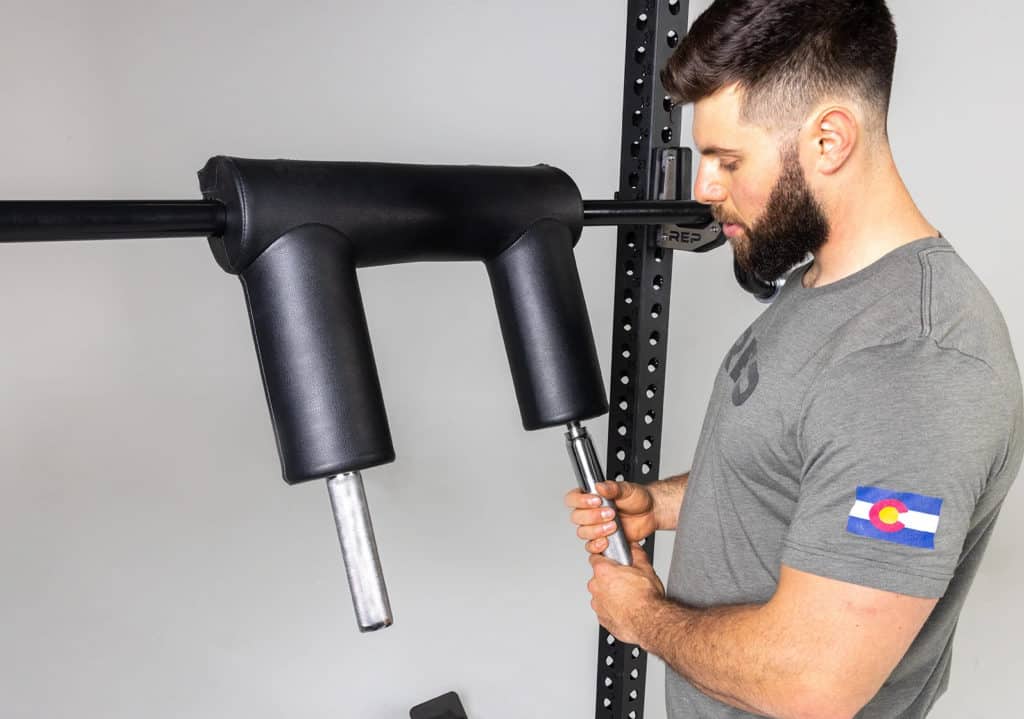
Lifting heavy weights can stress your body, but the safety squat bar delivers a very comfortable way to lift heavy loads. Because of the cambered design of the safety squat bar, the bar can rest on the back, but the weight can be moved forward so that it descends right in line with the center of gravity. This makes the squat more comfortable for those with injured backs or lifters who want to give their back a rest.
The safety squat bar sits high on the neck, allowing the front squat to be executed perfectly because it does not need mobility in the upper body while adjusting the center of gravity. The safety squat bar is highly versatile and is suitable for many lower body movements, not only back squats. It is also perfect for lower body exercises such as good mornings, box squats, suspended squats, Zercher squats, front squats, and walking lunges.
Using the safety bar in walking lunges can be executed more comfortably and more enjoyable because you’ll get to lift more weight without being restricted by your grip strength. Because the safety bar has zero external shoulder rotation, it is suitable for almost everyone. If you want to grow in size and strength, the safety bar can help you. Bodybuilders and strength athletes also benefit from performing at higher volumes with this bar.
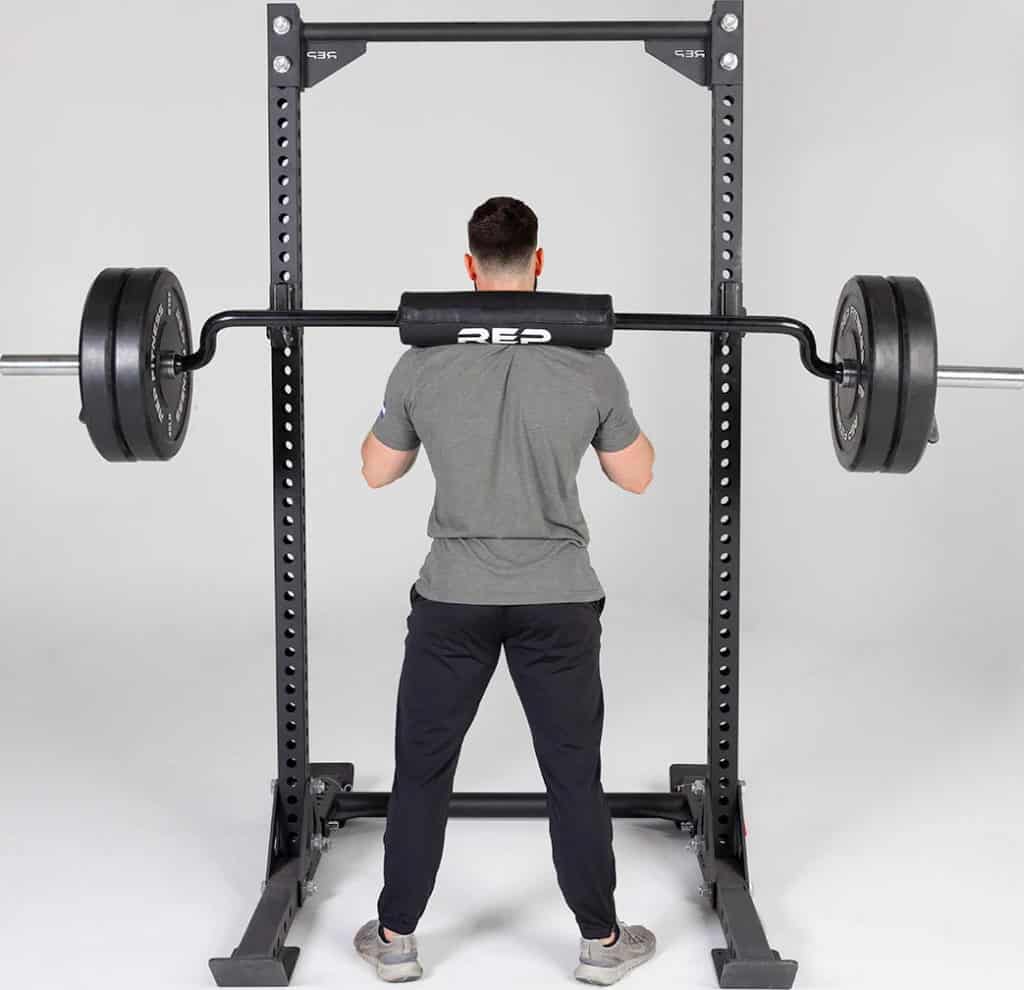
Multi-Grip Bars or Football Bars
Also known as the Swiss bar, the multi-grip bar or football bar is a remarkably prevalent piece of equipment for building strength. It is used for numerous pressing and pulling exercises, including the bench press. The multi-grip bar lets you place your hands in a neutral grip position where the palms face each other. Because of this, your shoulders can be easily placed in a retracted and depressed position while lifting.
This shoulder position is a vital facet of any pressing or pulling movement. This contradicts a straight bar where the hands are pronated, facing away from the body. The benefit of this bar is it reduces the stress placed on the wrists and shoulders while improving tricep activation. It is used by football players, powerlifters, and other strength athletes.
The multi-grip bar is easier on the shoulders, which is one of the main reasons lifters choose this bar. Its angled and neutral grips put the shoulder in a less compromised situation. With it, you can recover while also promoting muscle growth.
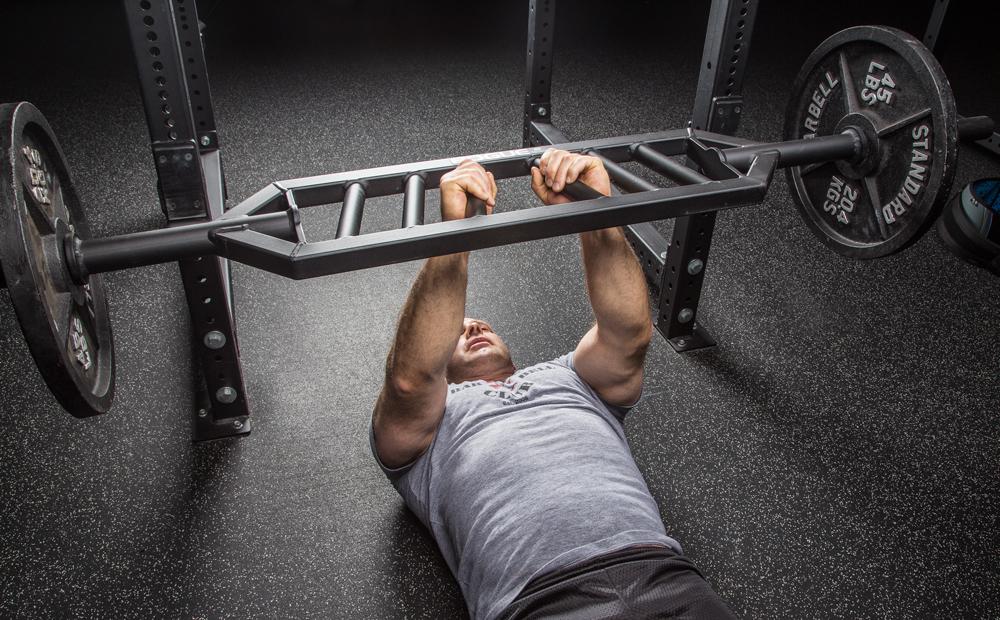
The multi-grip bar is very useful in building the triceps through neutral grip pressing activities. Because of its instability, you need to stay very tight through the lifts, making it challenging. This results for a stronger and leaner body. A traditional straight bar only has one size and shape, but a multi-grip bar comes in different sizes, shapes, grips, weights, and sleeves.
This gives you plenty of option that leads you to the right bar for your needs. This is known for benching, but a multi-grip bar is a versatile tool that can be used in several ways, including movements such as:
- Back Rows
- Floor Press
- Clean and Press
- JM Press
- Hammer Curls
- Shoulder Press
- Front Lateral Raise
- Stiff-Legged Deadlift
- Chin Ups (Place on top of Rack)
- Push Ups (Place on Rack Safeties)
- Triceps Skull Crushers/Extensions
- Inverted Back Rows (Place on Rack Safeties)
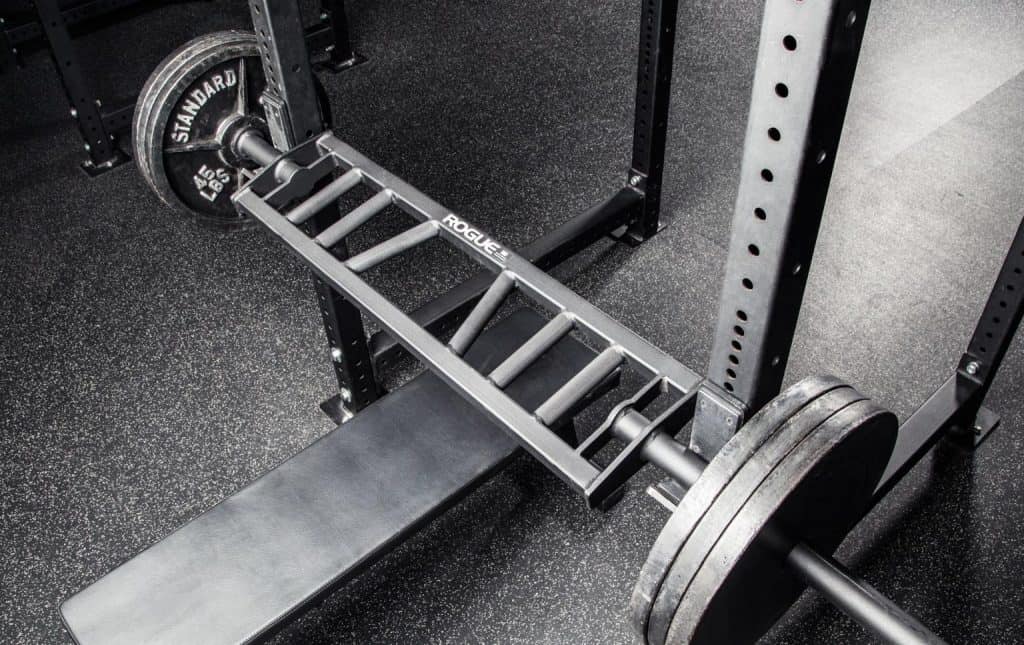
Curl Bar
The curl bar is a multi-angled specialty barbell developed to work your biceps and triceps while relieving stress from your shoulders, elbows, and wrists. It is remarkably shorter than a standard Olympic barbell which usually sits at around seven feet in length—the EZ curl bar is about four feet. The slight W shape of the bar gives you numerous grip possibilities, making it a versatile barbell.
It is a very efficient tool for adding mass and strength to your biceps. It is also lighter than a standard barbell and weighs between 8 to 11kg (18 to 25 lbs). Hand positioning is what also differentiates a curl bar from a standard bar. The angle of your wrists with a standard barbell is straight, while your wrists are slightly rotated when using a curl bar, making your wrists slightly angled.
The curl bar is commonly utilized for exercises that work smaller muscle groups such as your biceps and triceps. These muscles usually need less weight than activities that use the straight bar, like the chest and legs. Because it is light, a curl bar is more suitable for beginners.

The curl bar is a very versatile tool and can be used for various exercises. It is also ideal for experienced lifters as it provides multiple lifts that allow you to build strength and improve your routine. It also allows you to work on distinct parts of your biceps and triceps, perfect for adding mass to your upper body.
The angled grip of the curl bar can help engage the muscles in the forearms, enhancing grip strength and general hand function. Its size is perfect for your home gym as it doesn’t take up much space. Here are just a few exercises that you can do with it:
- Bent Over Rows
- Spider Curl
- French Press
- Hip Thrusts
- Overhead Tricep Extension
- Skull Crushers
- Upright Rows
- Drag Curl
- Close Grip Curl
- Reverse Grip Curl

Specialty Bars
A specialty bar is created by lifters, for lifters, to load the body with a novel stimulus, overcome mechanical drawbacks, and reduce familiar pain points in the traditional effort. It is a unique training option for the Olympic standard barbell and offers various training regimes with multiple benefits. It is used in training as it makes it harder to perform a movement by adjusting the position of the weight in relation to the lifter.
A specialty bar is mainly used in the squat and bench press and for similar accessory movements. It helps stimulate your muscles to grow faster in size and gain strength, as it also strengthens weak muscle groups and decreases the risk of injury. The camber bar is a kind of specialty bar that is highly effective in enhancing your squat strength and skill.
It has an upper horizontal steel bar with two vertically-welded steel bars that extend beneath it. The Rogue CB-4 38MM camber bar, also known as the Double T, was designed in collaboration with Westside Barbell. This design sought to form a curved/bowed specialty bar suited to the world’s top powerlifters, Strongmen, and athletes.
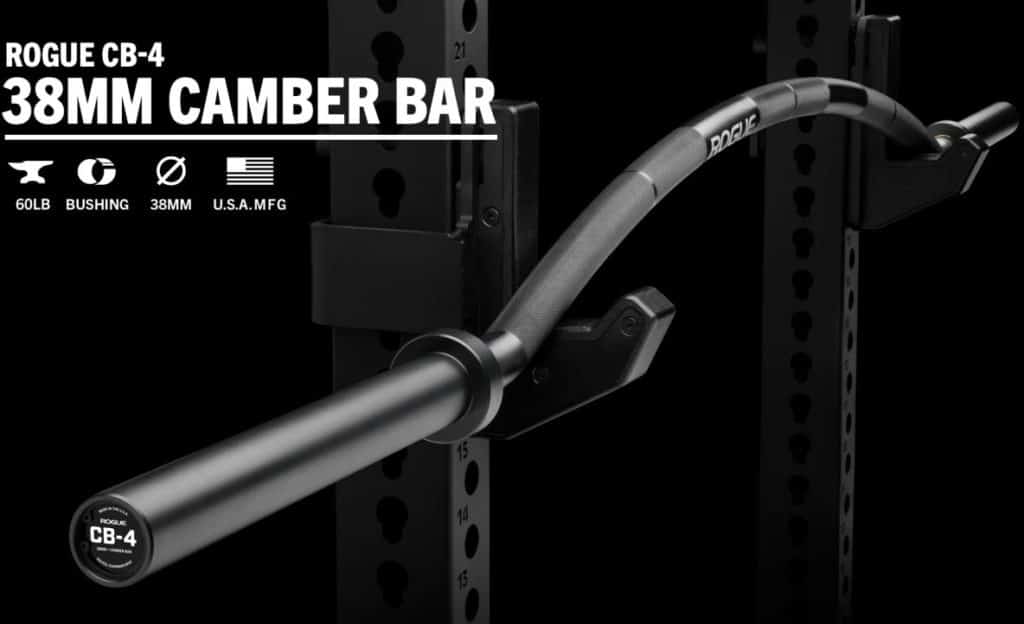
Even if you have flexibility issues or injuries, you can continue squatting heavily because this bar takes the pressure off your shoulders and elbow. The CB-4 38MM Camber Bar also adjusts to the size of the strongest competitive and at-home lifters, giving them room to place their hands wider apart than a standard barbell. It is a 38MM curved power bar with a 4.4” drop and a robust 55” wide bend, so athletes of every size can have the ability to find a point on the curve that works for them.
The CB-4 38M has an additional 9” distance between the sleeves and ensures that on most racks, the cambered part of the bar won’t flip down when unsupported. The multi-grip bar is another type of specialty bar. Rogue Fitness’ Kabuki Kadillac bar forms three different angles for hand positioning, at 10°, 12.5°, or 15° when combined with the cambered design of the bar.
It allows more exercises and progressions, promotes optimal, stacked joint positions, and enhances movement mechanics for athletes of any size or skill level. The 1/4″ laser-cut frame of the Kadillac Bar is cambered/angled like the Kabuki Duffalo Bar, developed by the recognized strength coach and powerlifter, Chris Duffin.

Buyer’s Guide to Barbells – Barbell Types – In Summary
That’s our advice regarding all the different barbell types you may find in the gym.
Seeing different kinds of barbells in a gym can be confusing, but with this guide, we hope you now understand their differences, so you can maximize their benefits fully. Barbells are valuable and the most ergonomically-friendly load-handling tool that allows you to carry heavy weights. They are versatile, help improve athletic performance, strengthen your whole body, and increase your range of motion, along with other benefits.
Find out about other types of barbells for the gym.
Photo Credits
Product photos on this page are property of the manufacturers.
This website is not affiliated or associated with CrossFit, Inc. CrossFit is a registered trademark of CrossFit, Inc.
Affiliate Disclaimer
We are an affiliate of various manufacturers and vendors that sell this gym and training equipment. If you buy clothing or other training gear after clicking the links in this article, we receive a small commission at no extra cost to you. This helps us to bring you in-depth information and content on these great training products.

Tim is the founder of FitAtMidlife.com – an avid gym rat for 30+ years, he’s a reviewer of many, many shoes – and founder of the Speed Bag Gathering – the world’s only gathering of speed bag punching enthusiasts. See more gym reviews at Tim’s YouTube channel.

